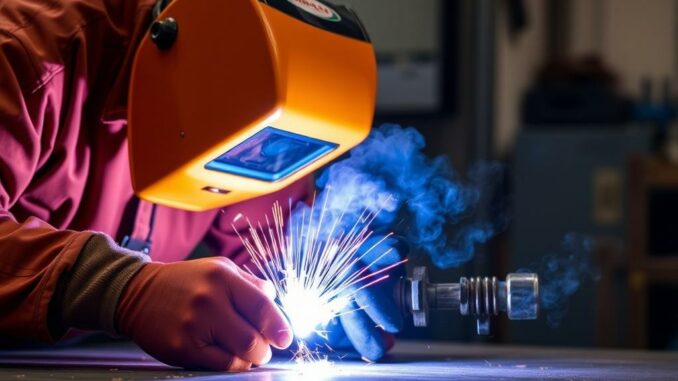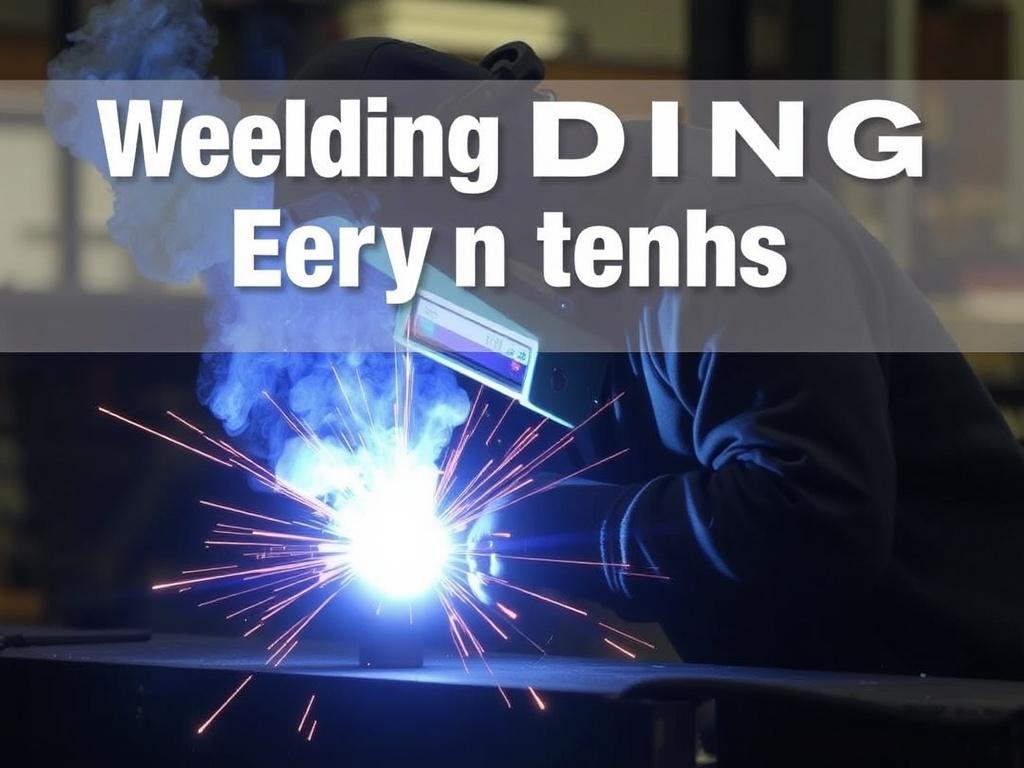
If you’re just stepping into the world of welding, you’ll quickly realize that there’s a language all its own tangled with sparks, metals, and heat. Understanding essential welding terms is critical not only for learning the craft but also for ensuring safety, efficiency, and professionalism. Whether you want to become a professional welder or simply learn how to fix things around your home, this comprehensive guide will introduce you to all the core terminologies and concepts you need to kickstart your welding journey.
In this article, we’ll explore a wide range of vital welding terms, from types of welding processes and materials to safety equipment and key techniques. By the time you finish reading, you will feel more confident in conversations at the workshop and have a much clearer grasp of the welding world.
Why Is It Important to Learn Welding Terminology?
Imagine learning a new language without knowing the vocabulary. Welding is very much like a language, filled with unique words and phrases that describe actions, materials, tools, and safety measures. A strong grasp of welding terminology allows you to:
- Communicate Effectively: Speak with other welders, instructors, and suppliers without confusion or misunderstanding.
- Understand Instructions: Follow welding manuals, tutorials, and safety guidelines accurately.
- Improve Your Skills: Quickly grasp welding techniques and troubleshooting tips.
- Stay Safe: Know the terms related to hazards and protective equipment.
Now let’s dive into the heart of welding terminology, starting with the types of welding processes every newcomer should understand.
1. Types of Welding Processes
Welding comes in many varieties, each suited for different applications. Knowing these types helps you choose the right method for your projects.
Shielded Metal Arc Welding (SMAW)
Sometimes called stick welding, SMAW is one of the most common and basic welding methods. It uses a consumable electrode coated with flux to lay the weld. The heat generated from an electric arc melts both the electrode and base metals, fusing them together.
- Advantages: Simple, inexpensive equipment; good for outdoor use.
- Disadvantages: Produces slag that must be chipped away; slower compared to some other methods.
MIG Welding (Gas Metal Arc Welding – GMAW)
MIG welding uses a continuously fed wire electrode and an external shielding gas (usually argon or a mix) to protect the weld pool from contamination. This process is popular for its speed and ease of learning.
- Advantages: High productivity; produces clean welds; easy to automate.
- Disadvantages: Less effective outside due to wind blowing away shielding gas.
TIG Welding (Gas Tungsten Arc Welding – GTAW)
TIG welding uses a non-consumable tungsten electrode and an inert gas shield to produce precise, high-quality welds. It requires more skill but offers excellent control over heat and weld bead appearance.
- Advantages: Strong, clean welds; works on thin materials.
- Disadvantages: More complex and slower than other methods.
Flux-Cored Arc Welding (FCAW)
This technique is similar to MIG welding but uses a tubular wire filled with flux instead of solid wire, enabling welding without external shielding gas in some cases. It’s great for heavy-duty and outdoor jobs.
Understanding these terms will help you pick the method that fits your needs. Here’s a simple table to compare these common welding types:
| Welding Type | Electrode Type | Shielding | Main Uses | Ideal For Beginners? |
|---|---|---|---|---|
| SMAW (Stick Welding) | Consumable coated electrode | Flux inside electrode | Outdoor, heavy steel | Yes |
| MIG (GMAW) | Consumable continuous wire | External gas | Automotive, fabrication | Yes |
| TIG (GTAW) | Non-consumable tungsten | External gas | Thin metals, precision | No (requires skill) |
| FCAW | Flux-cored tubular wire | Internal or external gas | Structural steel, outdoor | Moderate |
2. Basic Welding Tools and Equipment
Before you even strike your first arc, it’s essential to familiarize yourself with the basic tools and equipment involved in welding. Here are some key terms you’ll encounter:
Electrode
The electrode is the metal rod or wire that conducts current – in most welding methods, it melts and becomes part of the weld joint. In stick welding, it’s a coated stick; in MIG, it’s a continuously fed wire spool.
Welding Torch or Gun
This is the device that holds the electrode and directs the heat and shielding gas to the joint. It’s what you hold and maneuver during welding. The style changes depending on your welding method.
Ground Clamp
The ground clamp completes the electrical circuit by connecting the metal you’re welding to the welding machine’s negative or positive terminal. Without good grounding, the arc won’t strike properly.
Welding Helmet
A crucial safety item, welding helmets protect your eyes and face from bright light, UV radiation, and sparks. Modern helmets often feature auto-darkening filters for convenience and safety.
Chipping Hammer
This tool is used to remove slag – the residue created on the weld’s surface after it has cooled, especially in stick and flux-cored welding.
Wire Brush
A stiff wire brush helps clean the metal before and after welding, removing rust, dirt, and slag, ensuring better quality and strength of welds.
For an easier grasp, here is a list of essential welding tools and their functions:
- Electrode Holder: Holds and feeds the electrode.
- Welding Machine/Power Supply: Provides the electrical power to create the arc.
- Protective Gloves: Shield hands from heat and sparks.
- Fume Extractor: Removes harmful gases and fumes.
- Welding Table: Stable platform to work on metal parts.
- Clamps: Hold metals securely during welding.
3. Important Welding Characteristics and Concepts
As a newbie, wrestling with concepts like “arc,” “weld pool,” and “penetration” might be daunting, but these are fundamental to understanding how welding works.
Arc
The arc is the heart of welding – a continuous electrical discharge between the electrode and metal that creates intense heat (up to 6,500°F or 3,600°C). This heat melts the base metal and electrode to form a weld.
Weld Pool
This is the molten metal formed when heat melts the workpieces and electrode together. The welder controls the shape and size of the weld pool as it solidifies into a strong joint.
Penetration
Penetration refers to how deep the weld metal fuses into the base metal. Good penetration means a strong, stable joint. Too shallow, and the weld can fail; too deep might cause burn-through.
Slag
During some welding processes, a layer of flux residue called slag forms on top of the weld bead once cooled. It must be chipped or brushed away to inspect or apply additional welding passes.
Bead
The bead is the visible line or ridge left by the weld. Its appearance can tell you a lot about the quality of the weld.
Spatter
Spatter consists of small droplets of molten metal that scatter around the weld area during welding. Minimizing spatter helps maintain a neat working environment and reduces cleanup time.
4. Welding Safety Terms You Should Know

Welding involves many hazards – powerful currents, bright light, hot metals, and fumes. Safety is paramount, and there are essential terms related to protection you need to know to avoid accidents and health issues.
Personal Protective Equipment (PPE)
PPE includes all the gear designed to protect you while welding:
- Welding Helmet: Protects eyes and face.
- Gloves: Heavy-duty resistant to heat and sparks.
- Protective Clothing: Flame-resistant jackets and apron.
- Safety Glasses: For eye protection during grinding and chipping.
- Respirator Mask: Filters out harmful fumes.
Burns
Burns are common if you contact hot metal or sparks without proper protection. Knowing how to avoid and treat burns is part of staying safe.
Fume Extraction
This is the process of removing harmful welding gases and fumes from the breathing zone. Proper ventilation or extraction systems help prevent respiratory issues.
Grounding
Improper grounding can cause electric shocks. Ensuring all equipment and workpieces are properly grounded prevents dangerous electrical accidents.
5. Essential Welding Parameters and Techniques
As you advance, understanding various welding parameters and techniques helps you create strong, reliable welds.
Amperage
Amperage (current) controls how hot the arc gets and how deep it penetrates. Beginners often struggle with this, but choosing the right amperage is like tuning the heat right for your specific welding task.
Voltage
Voltage influences the arc length and stability. Both amperage and voltage must be balanced for good weld quality.
Travel Speed
This is how fast you move your welding torch along the joint. Too fast, and you risk weak welds; too slow, and metal can burn through.
Stringer Bead
A straight, narrow welding bead where the torch stays steady in a line. This technique is good for thin materials or first passes.
Weave Bead
A wider weld made by moving the torch in a weaving pattern. It’s used to cover a larger area or thicker materials.
Preheating
Heating metal before welding to avoid cracks or defects, especially important for thick or high-carbon steels.
Post-Weld Heat Treatment (PWHT)
Heating the weld after completion to relieve stresses or improve metal properties.
6. Common Welding Defects and Their Terms
Every beginner makes mistakes, and understanding defect terminology helps you diagnose and fix problems effectively.
| Defect | Description | Causes | Prevention |
|---|---|---|---|
| Porosity | Gas bubbles trapped in weld metal | Contaminated base metal, improper shielding gas | Clean workpieces, correct gas flow |
| Cracks | Fractures in weld or base metal | High stress, rapid cooling, poor technique | Preheating, proper technique, slow cooling |
| Undercut | Groove melted into base metal next to weld | Excessive current, poor technique | Adjust parameters, technique improvement |
| Lack of Fusion | Incomplete fusion between weld and base metal | Low heat, incorrect angle | Increase heat, proper positioning |
| Spatter | Dropped droplets outside weld area | High amperage, incorrect shielding gas | Optimize settings, use correct gas |
7. Welding Materials and Metal Types
Different metals react differently to welding. Knowing welding terms related to metals is crucial for successful projects.
Base Metal
The metal pieces you’re joining together through welding.
Filler Metal
The material added to the joint during welding, often from the electrode.
Carbon Steel
Common and easy to weld, but requires proper technique to avoid cracks.
Stainless Steel
Resists rust, but welders must avoid contamination to maintain corrosion resistance.
Aluminum
Lightweight and requires special equipment due to oxide layer and thermal conductivity.
Cast Iron
Difficult to weld due to brittleness; needs preheating and special filler rods.
8. How to Remember and Practice Welding Terms
Learning welding terminology might feel overwhelming at first, but integrating these terms into your practical sessions will embed them in your memory.
- Create Flashcards: Write terms on one side and definitions on the other for quick review.
- Use a Welding Journal: Track your welding sessions, noting terms and techniques you used.
- Watch Videos: Seeing terms in action cements your understanding.
- Join Welding Forums: Engage with communities where these terms pop up regularly.
Conclusion
Mastering essential welding terms is like unlocking the gateway to an exciting and rewarding skill. By starting with a solid foundation of terminology—from welding processes to equipment, safety, techniques, and common defects—you put yourself on the fast track to becoming a competent welder. Each term you learn is one step closer to confidently picking up your torch and creating strong, beautiful welds.
Remember, welding is both an art and a science. Take your time, study the terms, apply them in practice, and don’t hesitate to ask experienced welders for guidance. Before long, you’ll find yourself not just knowing the essential welding terms but speaking the language fluently.
